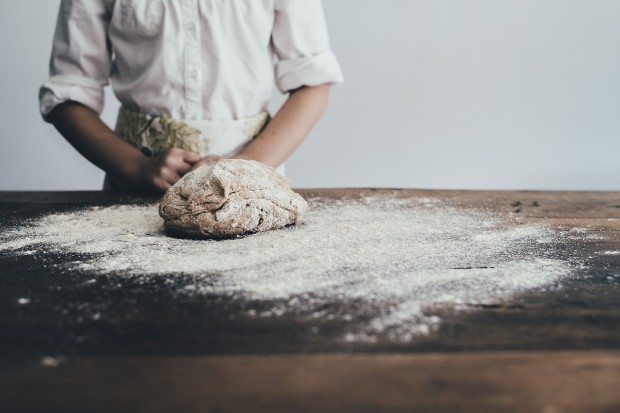Holiday Baking Gluten-Free Edition
- comments


(Photo : Pexels from Pixabay )
When you think of the holidays, you think about twinkling lights, cozy nights inside, and fresh-baked cookies and desserts. But, with all those sweet treats comes extra pounds and other health ailments. Maybe your new year resolution is to start leading a more healthy lifestyle, and you want to get a jump start on things. Whether you're deciding to go gluten-free, exercise more, or be more charitable, you'll likely need a little bit of help and encouragement, especially as you start.
Eating a gluten-free diet can seem complicated at first, but if you have the right tools on hand and an open mind, the health benefits can be seen pretty quickly and remain your motivation for the rest of the year. Let's take a look at how you can make the most out of your holiday season by cooking and baking the gluten-free way and continuing the lifestyle through the new year. Especially if gluten has been giving you problems, you'll genuinely walk into 2022 with a "new year, new me" feeling by utilizing the following tips.
Flour Power
When it comes to leading a gluten-free lifestyle, one of the things that people initially miss is their delicious fresh baked bread, cookies, and cakes. Even finding a sandwich bread you love can feel challenging. One of the easiest ways to beat these blues is by baking your bread. Baking bread yourself may feel like a chore initially, but once you get the hang of it, it's not only easy but pays in spades. Of course, the secret to delicious gluten-free baking is the flours you choose to bake with.
The most commonly used flours in baking are white, all-purpose, or whole wheat flours. Those are not gluten-free, but that doesn't mean your options are limited. One of the most popular gluten-free flours is almond flour, followed closely by oat flour. Another option that has profound health benefits on top of being gluten-free is cassava flour. You may not have heard of this type of flour, but it's the main ingredient in Tapioca; you just never knew it. Cassava is excellent because, unlike nut flours, it's virtually tasteless, making it a grain-free gamechanger! Exploring different flour options and finding the taste and texture you prefer will make all the difference in your baking.
Keep Things Spicy
While spices are a staple in virtually every kitchen, they become a critical element to getting used to eating gluten-free. As you start your gluten-free journey, you may find that it's easy to eat a vegan diet in a lot of ways. A diet full of fresh fruits and vegetables is easy to know; it's gluten-free and takes the guesswork out of shopping and cooking. One quick and straightforward way to make vegan desserts taste great is by adding delicious spices like cinnamon and vanilla. Not only do these spices taste great, but they bring health benefits as well - cinnamon has been shown to regulate blood sugar levels. Talk about a holiday win!
Chocolate Changes Everything
One staple of many desserts, including holiday desserts, is chocolate. You're sure to please any crowd with your gluten-free creations if you incorporate chocolate. And, you may not have realized that chocolate is a nutritional powerhouse in its own right. Make sure you're opting for pure cacao in nibs or powder form to get the most benefit. But, you can also bake with dark chocolate, semi-sweet chocolates, or chocolate sweetened with monk fruit to avoid excessive sugar levels in your baking. Remember, you don't have to sacrifice serious sweetness in your gluten-free baking, and chocolate can be a crucial player in making that happen!
Strong Flavors Are Saviors
Another option to make your gluten-free delectable is opting for strong flavors that make your desserts stand out. One ingredient common in gluten-free dishes is coconut. Whether you're baking with heavy coconut creams or coconut flakes as a garnish, the intense flavor of the coconut can be a new flavor to add to your seasonal cooking list.
Baking gluten-free is the same as baking with traditional flours and, in many ways, is more fun. Don't look at the new ingredients you're using as a challenge, but as an opportunity to explore your culinary skills. Getting to the correct thickness levels with frostings can have a learning curve, but that makes it even more rewarding when you nail it with your newest recipes. So, here's to your health and a new year in the new year. Happy baking!


